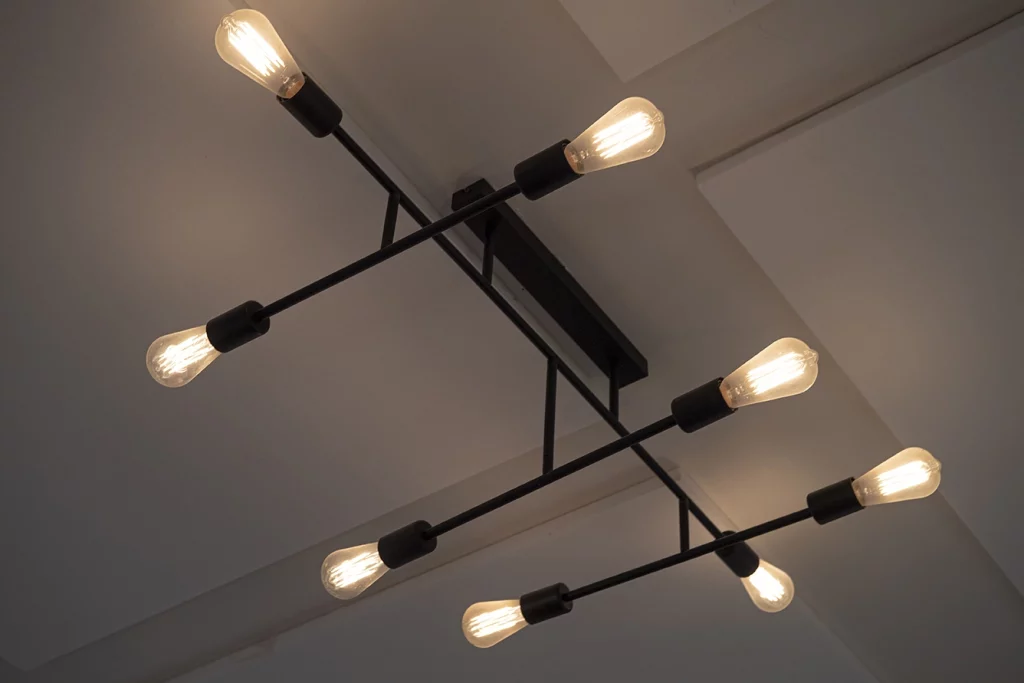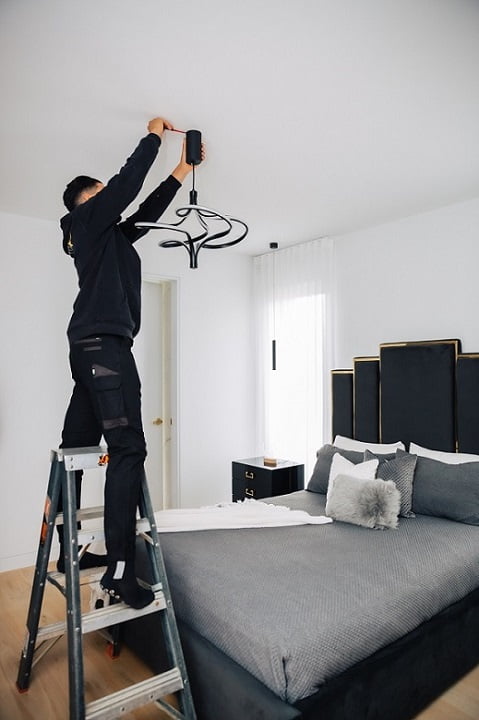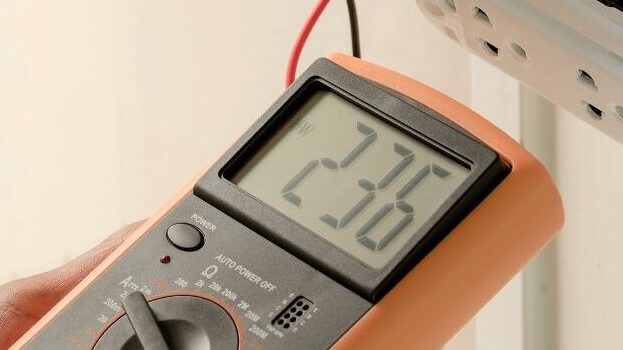Discover the Reasons Behind Your LED Light’s Unforeseen Dimming
Quick Fix First:
If you notice your LED light unexpectedly dimming, it is often due to a voltage issue, a circuit overload, elevated heat, poor connections, or simply low-quality LED bulbs. Continue reading for comprehensive guidance on how to effectively resolve this issue.
Identify the Top 5 Reasons for LED Light Dimming and Learn How to Fix Them
LED lights are renowned for their remarkable longevity, often marketed as lasting for many years without issues. However, it can be disheartening when some fail to last even a single season. Whether you are working with downlights in your kitchen, decorative garden lights, or festive Christmas LED lights, encountering sudden dimming can be both frustrating and surprisingly common. In this detailed guide, we will delve into the primary causes of LED dimming and provide you with safe, effective troubleshooting methods to restore your lighting to its optimal brightness.

1. How Do Voltage Drops Lead to Unexpected Dimming in LED Lights?
The predominant reason for LED lights dimming unexpectedly is a voltage drop. When the voltage supplied to the light fixture falls below the necessary threshold for the LED, you will notice a significant decrease in brightness. So, what factors contribute to this issue? Let’s explore.
- Temporary disruptions within the power grid
- Local circuits facing overloads
- Long wiring distances employing thin cables
- Defective switchboards or inadequate connections
Voltage drops can pose considerable challenges, particularly with budget LED lights that frequently lack proper voltage regulation and show increased sensitivity to even minor voltage fluctuations. To ensure effective solutions, always consider upgrading to high-quality products that can withstand these issues.
Also Read: 10 Ways to Save On Power And Energy Costs
2. How Can You Identify Overloaded Circuits in Older Homes?
Overloading your electrical circuits by connecting too many appliances or devices can greatly strain your power supply. When a circuit struggles to meet demand, the voltage becomes unevenly distributed across the devices, leading to dimming lights, particularly for sensitive LEDs. This issue is especially prevalent in older homes designed before modern energy-intensive technologies became common. Signs of overloaded circuits typically include:
- Flickering lights
- Buzzing switches
- Dimmed lights, particularly in affordable LEDs that may lack essential protective features.
Book in For A Quote and Ask About Our FREE Electrical Inspections
3. How Should You Handle Loose Connections and Damaged Wiring?
Inadequate power delivery can stem from loose fittings or aging cables. If your light flickers or dims when you adjust a switch or device, it may indicate loose connections. Here are some crucial areas to inspect:
- Ensure the bulb is seated securely
- Monitor for flickering at the wall switch
- Look for burn marks, discolouration, or unusual buzzing sounds
Important: Many low-cost LED lights utilise thin or poor-quality internal wiring, making them more susceptible to failure due to heat or movement. Regular inspections and maintenance can play a vital role in preventing unexpected issues from arising.
Also Read: Keep Your Pets Safe Around Electricity
4. What Are the Dangers of Overheating in LED Lights?
While LEDs generate less heat than incandescent bulbs, they still necessitate efficient heat dissipation. If an LED overheats, it will automatically dim to safeguard itself. Overheating can occur due to several factors:
- Enclosed light fittings that restrict airflow
- Defective heat sinks, particularly in budget models
- Excessively high ambient temperatures
- Inadequate air circulation around the fixture
If your LED housing feels hot to the touch, it is likely suffering from overheating. This problem is especially common with inexpensive, poorly ventilated LED downlights or garden lights installed in direct sunlight without proper thermal protection.

5. Why Does Lumen Depreciation Lead to Dimming in LEDs Over Time?
Even high-quality LEDs will gradually lose brightness with extensive use, a phenomenon known as lumen depreciation. Quality LEDs can maintain about 70% to 90% of their brightness after approximately 50,000 hours of use. In contrast, cheap LED products may start to fade after only 5,000 to 10,000 hours, often doing so unevenly. If your light appears to be:
- A budget model, it may simply be nearing the end of its lifespan.
- Several years old and heavily utilised
- Experiencing frequent usage
What Causes Budget LED Lights to Fail Prematurely?
During festive seasons, inexpensive LED lights flood the market, available in various forms such as string lights, downlights, garden features, and more. The potential risks associated with these products include:
- Inconsistent voltage tolerance: making them susceptible to dimming and flickering
- Poor heat management: increasing the likelihood of overheating
- Low-quality drivers: which cannot effectively regulate electrical current
- Lack of weatherproofing: rendering them unsuitable for outdoor usage
Holiday Tip: When purchasing LED Christmas lights, select products that have:
- IP65+ waterproof rating
- Certification compliance marks (e.g., RCM)
- Reputable brands (avoid lesser-known bargain brands)
While opting for cheaper lights may save you money initially, they can lead to increased costs in terms of replacements, safety, and long-term frustration.
Effective Methods to Resolve Dim LED Lights
Inspect for Loose Connections and Overheating Signs
Begin by thoroughly examining your light fixture. Is the bulb securely fastened? Are there any visible signs of fraying, corrosion, or damage? If you detect anything unusual, do not attempt to repair it yourself, especially if wires are exposed or if the fixture appears burnt or melted. Carefully touch the fixture; if it feels excessively hot—think “it-could-cook-an-egg” hot—that is a significant red flag. Overheating fixtures pose serious hazards and often require replacement.
Need assistance? We are Beacon Lighting Recommended Electricians, and installing and replacing LED fittings is our specialty. Whether you’re in Braybrook, Yarraville, or nearby, Electrx can resolve the issue safely and promptly.
Utilise a Multimeter to Assess Voltage Levels
If your LED is dim due to low voltage, using a multimeter will help identify the problem. Testing the voltage at your LED fixture will show whether your lights are receiving the appropriate power supply. Compare the voltage measured with the recommended voltage for your specific LED lights. If the voltage is lower than required, this may explain the dimming. Should the voltage consistently fall short, you may face a more significant electrical issue and should contact a qualified electrician for further investigation.
If you discover low voltage across multiple fittings, there is likely a larger wiring or switchboard issue at hand.

Examine the Dimmer Switch Settings for Compatibility
We frequently receive queries like this:
“Why is my light dim?”
Us: “Do you have a dimmer switch?”
Them: “…oh.”
Ensure that no accidental adjustments have been made to the dimmer, or check for compatibility issues with your LED model, as this can often lead to unexpected dimming.
Test the Circuit by Turning Off Other Appliances
Try switching off other devices connected to the same circuit as your LED lights. If your lights brighten, you are likely dealing with an overloaded circuit. Consider implementing the following strategies:
- Redistributing devices to different circuits to balance the load
- Upgrading your switchboard for enhanced performance
- Replacing budget LEDs with more efficient models to ensure longevity
Also Read: Electrical Upgrades For Your Office
Replace the LED Bulb if Necessary to Restore Brightness
If none of these solutions resolve the issue, your LED may simply be reaching the end of its lifespan. Test by swapping it out with another LED bulb from your home. If the replacement bulb restores full brightness, the old bulb was likely due for retirement. In that case, go ahead and purchase a new LED bulb. However, if changing bulbs does not rectify the issue, the underlying cause likely lies elsewhere, necessitating further investigation.
Key Insights on LED Dimming Issues
So, why did your LED light suddenly dim? The potential culprits could include:
- Voltage drops impacting performance
- Loose connections disrupting power flow
- Heat buildup compromising functionality
- Circuit overload due to excessive devices
- Or the LED itself—especially if it is a budget model
With this guide, you are now equipped with the knowledge of what to check—and how to rectify the situation effectively.
However, if you are uncertain or notice any signs of damage, never compromise on electrical safety.
Let Electrx Provide Professional Assistance for Your Lighting Needs
We are licensed electricians and recognised installers for Beacon Lighting. Our services encompass:
- Testing and replacement of LEDs to ensure safety and efficiency
- Circuit diagnosis to pinpoint and resolve electrical issues
- Solutions for overload and overheating challenges in your home
- Safe, long-lasting electrical upgrades tailored for your needs
If you have any uncertainties regarding electrical matters, it is always wise to consult a professional electrician, such as Electrx Electricians. Get in touch with us today for expert help and reliable service.

Common Questions About Troubleshooting LED Lighting Issues
Q: Why is my new LED bulb already dim?
A: This could stem from a voltage drop, faulty wiring, or a low-quality LED lacking sufficient voltage regulation. Consider swapping it with a high-quality LED first to see if that resolves the issue.
Q: Do cheap LED lights experience dimming more quickly than high-quality options?
A: Absolutely. Budget LEDs often lack adequate heat sinks and stable drivers, leading to premature lumen loss, flickering, and dimming—especially in hot or outdoor environments.
Q: Why do my Christmas lights flicker and fade over time?
A: Seasonal LED string lights are often manufactured using lower-grade components. Environmental exposure, overuse, and power surges can all contribute to dimming. Always opt for outdoor-rated, certified lighting to ensure durability and performance.
Q: Can I resolve dimming LED lights on my own?
A: You can troubleshoot by checking fittings, testing voltage levels, and replacing the bulb. However, if the problem persists—especially across multiple fittings—contact a licensed electrician for professional assistance to ensure safety.
The Article: LED Light Dim? Discover the Reasons Behind It first appeared on https://writebuff.com
The Article LED Light Dim: Uncover the Causes of Dimming Issues Was Found On https://limitsofstrategy.com
References:
https://limitsofstrategy.com/led-light-dim-uncover-the-causes-of-dimming-issues/



